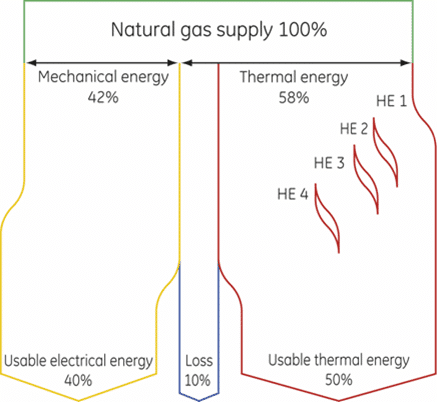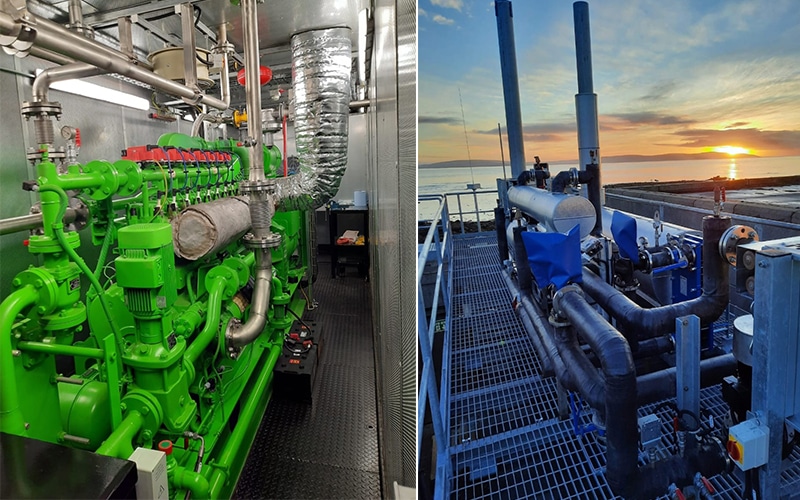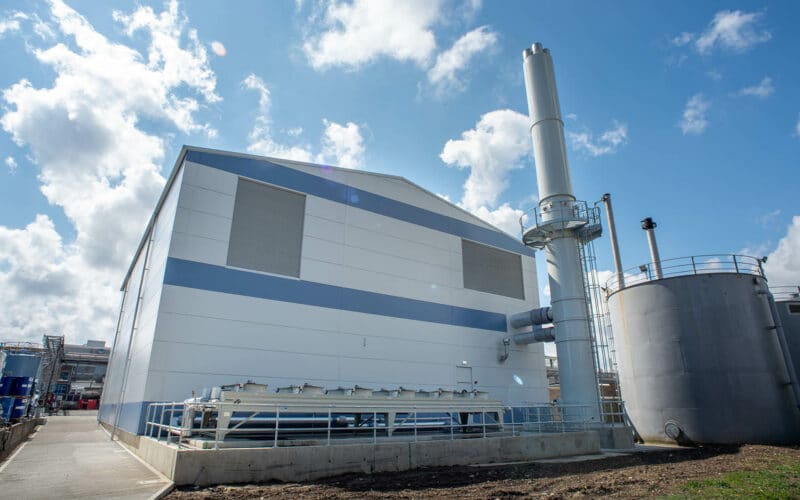
CHP | Combined Heat and Power | Cogeneration
CHP or combined heat and power is the simultaneous cogeneration of electricity and heat. Cogeneration is a highly efficient form of energy conversion and using gas engines it can achieve primary energy savings of approximately 40% compared to the separate purchase of electricity from the electricity grid and gas for use in a boiler.
If the fuel for the gas engine is renewable such as biogas, hydrogen, syngas or biomethane, CHP can be a highly sustainable source of electricity and heat.
Combined heat and power plants are typically embedded close to the end user and therefore help reduce transportation and distribution losses, improving the overall performance of the electricity transmission and distribution network.
District energy schemes use combined heat and power plants to generate both electricity and heat for a group of residential or commercial buildings. For power users where security of supply is an important factor for their selection of power production equipment and gas is abundant, gas-based cogeneration systems are ideally suited as captive power plants (i.e. power plants located at site of use).
Being a localised source of power generation, it can help improve a site’s resilience in the event of a power grid failure with the addition of island mode operation features.



CHP Solutions from Clarke Energy
Find out how combined heat and power (cogeneration/trigeneration) integrates with industrial customers factories to save money and reduce carbon emissions.
Clarke Energy’s CHP solutions have been successfully deployed in a wide range of environments including; Universities, Hospitals, Commercial Buildings and Data Centres.
Benefits of CHP for Your Business
The high efficiency of a CHP plant compared with conventional bought in electricity and site-produced heat provides a number of benefits including:
- On site production of power
- Reduced energy costs
- Reduction in emissions compared to conventional electrical generators and onsite boilers
Clarke Energy Global CHP Experience
>8GW
Power installed globally
>1.4GW
CHP installed globally
>500
Service engineers on the ground
Rapid ROI
Fast pay-back of CHP installations
Arrange a FREE feasibility study
Contact us for a free, no-obligation feasibility study of your businesses energy demand.
Walkthrough
Explore a Clarke Energy installed combined heat and power plant with this 360-degree walk-through of the site:
CHP Applications
A variety of different fuels can be used to facilitate cogeneration. In gas engine applications CHP equipment is typically applied to:
Heat Sources from a Gas Engine
The heat from the generator is available in from 5 key areas:
- Engine jacket cooling water
- Engine lubrication oil cooling
- First stage air intake intercooler
- Engine exhaust gases
- Engine generator radiated heat, second stage intercooler
1, 2 and 3 are recoverable in the form of hot water, typically on a 70/90˚C flow return basis and can be interfaced with the site at a plate heat exchanger.
The engine exhaust gases typically leave the engine at between 400 and 500˚C. This can be used directly for drying, in a waste heat boiler to generate steam, or via an exhaust gas heat exchanger combining with the heat from the cooling circuits. 5. The heat from the second stage intercooler is also available for recovery as a lower grade heat.
CHP System Efficiency
Gas engine combined heat and power systems are measured based upon the efficiency of conversion of the fuel gas to useful outputs. The diagram below illustrates this concept.
Firstly, the energy in the fuel gas input is converted into mechanical energy via the combustion of the gas in the engine’s cylinders and their resulting action in the turning of the engine’s crankshaft. This mechanical energy is in turn used to turn the engine’s alternator in order to produce electricity. There is a small amount of inherent loss in this process and in this example the electrical efficiency of the engine is 40% (in practice INNIO’s Jenbacher gas engines are typically between 40-50% electrically efficient).

Additional information on the more technical aspects of CHP can be viewed here.
Heating value | Laminar flame speed | Methane number | District energy
Case Studies
Biogas CHP Powering Mutton Island Wastewater Treatment Plant in Ireland
Clarke Energy commissioned a combined heat and power (CHP) system designed to enhance energy efficiency and sustainability at the site.
Sonar Madina Spinning Mills Invests in Energy Efficiency & Sustainability
Learn how this spinning mill in Bangladesh can enhance their energy efficiency by utilising their waste heat.
Clarke Energy Deliver Full Turnkey Hydrogen Ready CHP Plant to Sterling Pharma Solutions
Clarke Energy acted as principal contractors, to design, construct and maintain a bespoke hydrogen ready, gas fired combined heat and power (CHP) plant.
Interested in installing a CHP for your business?
Speak to your local Clarke Energy office to discuss the next steps to arrange a feasibility study of your energy demand.









